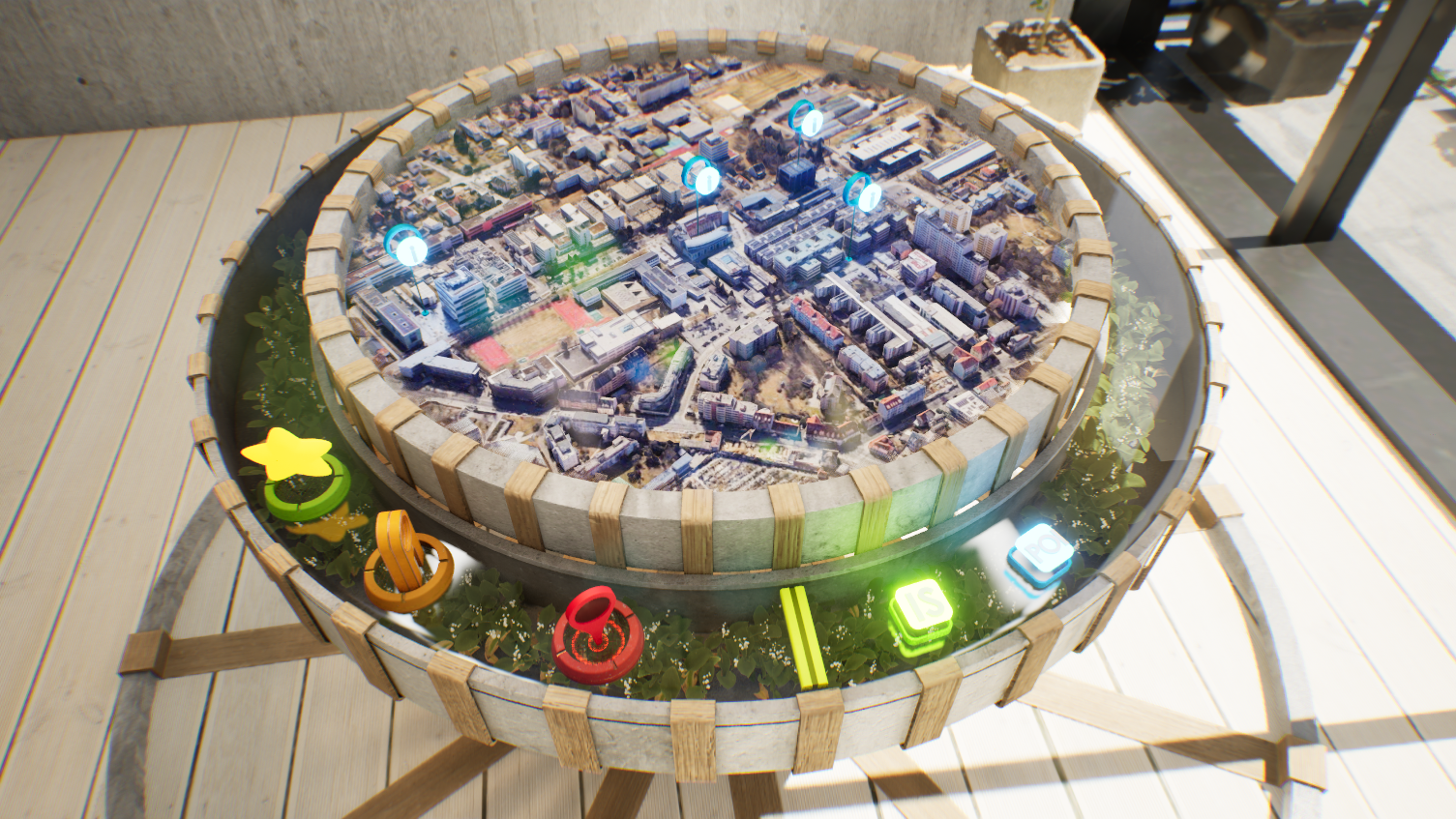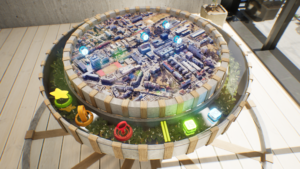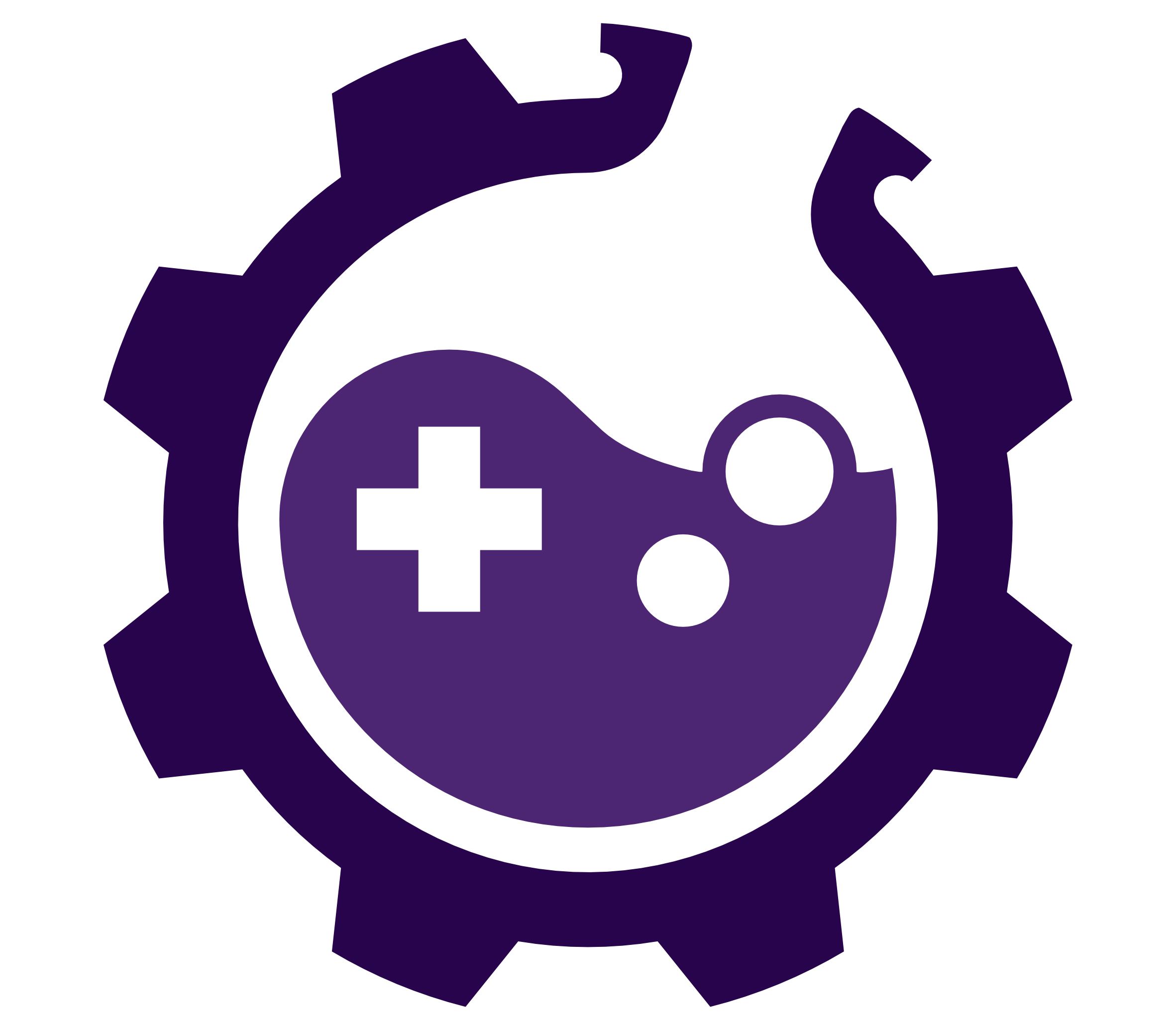
VR4UrbanDev
Against the backdrop of advancing urbanisation, research and development for the energy transition and adaptation to climate change are very important for the future of our cities and city districts. These are to be made climate-neutral, resilient, efficient and liveable. This results in a challenging, multi-layered and highly complex field of work. At the same time, the digital technologies and tools currently available are less and less able to meet the high demands necessary to achieve this. It is therefore necessary to develop next-generation technologies for future energy research. This is being done in VR4UrbanDev.
Buildings and urban districts are now being developed in an increasingly integrative way. This means that many participating subject areas are being integrated into the development process at the same time. However, this makes the diversity of the individual research contents and their interrelationships increasingly difficult to grasp. Furthermore, digital tools such as 3D CAD (city) models (BIM & UIM), urban building energy simulations (UBEM), data acquisition and Internet of Things (IoT) monitoring, etc. generate very complex content and large amounts of data. Traditional methods of data analysis and presentation clearly reach their limits here. However, making this content easy and intuitive to use for scientists and other stakeholders involved is key for developing and implementing measures for the energy transition and climate change adaptation in cities and neighbourhoods.
In the VR4UrbanDev project, we are addressing this issue by developing a next-generation immersive digital-twin research environment using virtual reality (VR) technology.
The immersive nature of VR opens up diverse and previously unused possibilities to interact with simulation and monitoring of energy systems and to visualise scientific results. With the help of a specially developed VR environment, the user is directly immersed in the models and IoT data. The virtual environment feels real. As if you were there in person. Well-designed, interactive 3D objects convey the content and information on an intuitive level. You can touch and manipulate them, walk through them or make them transparent. Jumps between changed model parameters as well as in space (exterior, interior, scenarios) and time (day and seasons, whole years) are also possible without any problems. The desired data are thereby imprinted on the 3D objects and are thus a direct part of this environment. Since our brain perceives the virtual environment as real, no lengthy thought processes are necessary. Complex contents are absorbed intuitively, parameter changes are immediately visible and the core statements can be easily comprehended.
The central project result is a Virtual Reality Digital Twin environment of the test site “TU Graz – Innovation District Inffeld”. The user can interactively operate and visualise energy-technical building simulations and Internet of Things monitoring data of the districts. Furthermore, several research questions on topics that have not been considered so far, such as the possibilities of coupling virtual reality with simulation models or IoT platforms, will be answered and the research results will be published internationally. This will support all stakeholders in making our cities more climate-neutral, resilient, efficient and liveable.
Project: VR4UrbanDev

01/01/2023 -
ENERGIE DER ZUKUNFT, SdZ, SdZ 9. Ausschreibung 2021
